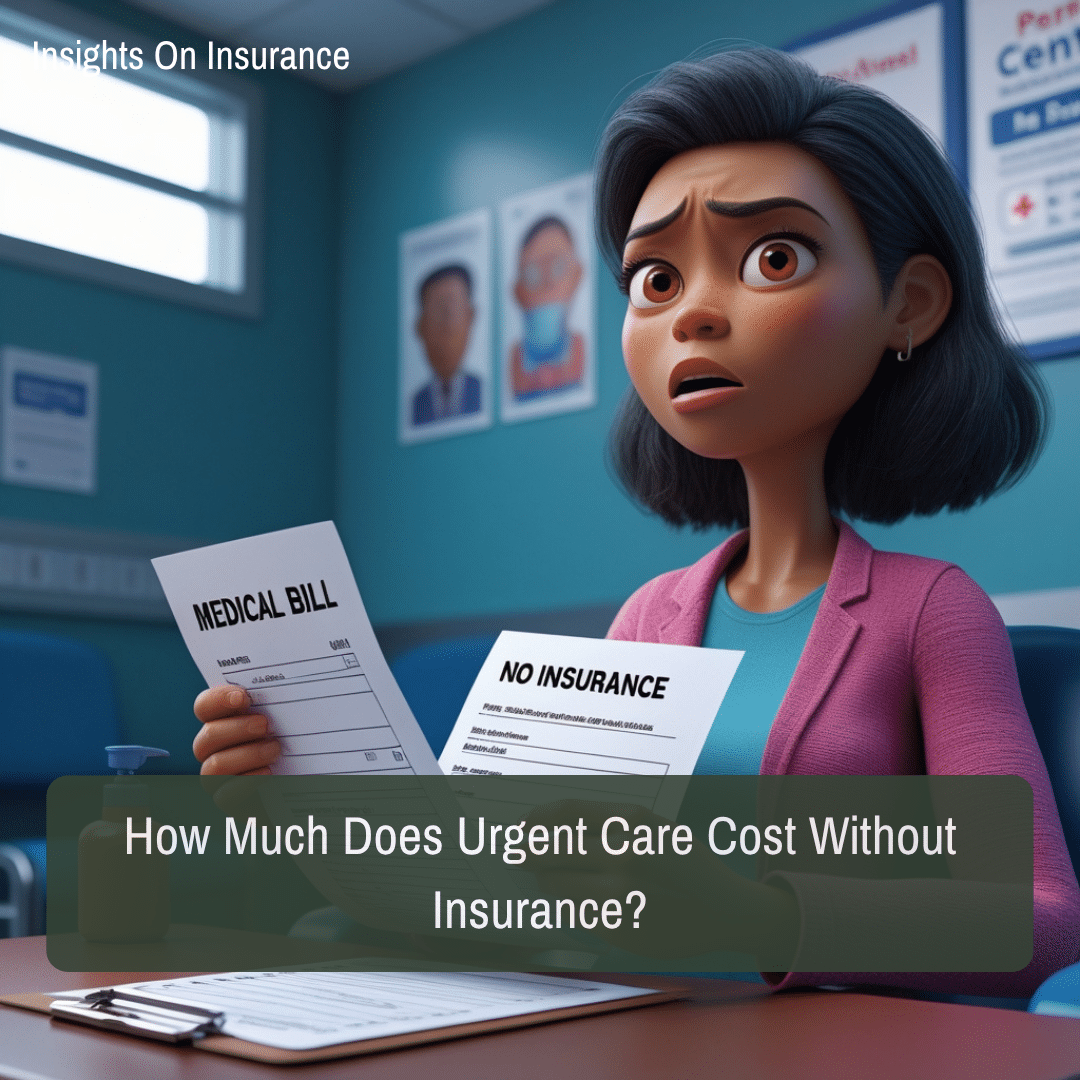In a perfect world, no one would ever have to worry about the cost of healthcare—especially during moments of urgent need. But if you’re one of the millions of Americans without health insurance, a simple trip to an urgent care clinic can lead to financial stress.
At InsightsOnInsurance, we believe healthcare should be accessible—even if you’re uninsured. In this blog, we break down exactly how much urgent care costs without insurance, what factors affect those costs, and smart ways to lower your out-of-pocket expenses.
The True Cost of Urgent Care Without Insurance
When you walk into an urgent care center without insurance, expect to pay anywhere between $100 to $200 for a basic consultation. That’s the average flat fee, which covers your exam and evaluation.
However, that’s just the starting point. Once you add lab tests, X-rays, medications, and treatments, your total cost can easily climb to $300 to $600 or more, depending on your condition and clinic location.
For example, a sore throat might only cost $150, while a visit involving stitches, an X-ray, and medication could run you closer to $500. It all depends on what’s required to treat your situation.
What makes urgent care appealing—despite the cost—is that it’s still much cheaper than the emergency room. An ER visit for a non-life-threatening issue can range from $1,000 to $3,000. Urgent care is designed to be a cost-effective middle ground.
What Services Are Typically Included?
Most urgent care clinics operate with a standard pricing model. The base fee usually includes:
- A physical exam by a doctor or nurse practitioner
- Diagnosis and treatment recommendations
- Prescriptions (if needed)
- Minor procedures like wound care or basic splinting
However, there are additional costs for services like:
- Lab tests: Blood tests, urinalysis, strep tests — $30 to $100 each
- Imaging: X-rays or ultrasounds — $75 to $250 depending on the area
- Medications on-site: Some clinics offer injections or in-house antibiotics
- Follow-up care: Second visits or referrals may cost extra
Always ask for an itemized bill so you can understand exactly what you’re being charged for.
Why Prices Vary So Much
It can be frustrating when one clinic charges $120 and another asks for $250 for the same service. But the truth is, several factors influence the final bill:
- Location: Clinics in urban areas or high-income neighborhoods may have higher pricing.
- Clinic Ownership: Hospital-owned clinics sometimes charge more than independent ones.
- Service Quality: Some urgent care centers offer advanced diagnostics and more personalized care, which may come with premium fees.
- Time of Day: Walk-in visits during late hours or holidays can have additional fees.
That’s why it’s smart to call ahead and ask for a price list or estimate—especially if you know what kind of care you might need.
Tips to Reduce Urgent Care Costs Without Insurance
Being uninsured doesn’t mean you have to accept the highest price. Here are practical ways to reduce your urgent care bill:
- Ask for cash discounts: Many clinics offer 10% to 40% off for self-pay patients.
- Look for flat-fee clinics: Some urgent care centers post transparent pricing online.
- Use retail clinics: Walgreens, CVS, and Walmart often offer walk-in clinics that treat minor illnesses for under $100.
- Negotiate your bill: It never hurts to ask if fees can be reduced, especially if you’re paying upfront.
- Avoid unnecessary add-ons: Only agree to labs or scans that are absolutely necessary. Some can be done later at a lower cost elsewhere.
At InsightsOnInsurance, we always recommend comparison shopping—even in healthcare. A 5-minute phone call can save you hundreds of dollars.
Alternatives to Urgent Care When You’re Uninsured
If you’re concerned about cost, here are other options to consider:
- Telehealth services: Virtual doctor consultations can start at just $30 and handle many minor issues.
- Community health centers: Federally funded clinics offer low-cost or free services based on your income.
- Sliding scale clinics: Some urgent care locations charge you based on your ability to pay.
- Charity care programs: Local hospitals sometimes have financial aid for uninsured patients.
These resources aren’t always widely advertised, so you may need to call around or search online for local options.
How to Plan Ahead Financially
We get it—no one plans to get sick. But if you’re uninsured, a little preparation goes a long way:
- Set aside an emergency health fund: Even saving $10/month helps.
- Look into short-term health plans: These provide limited coverage at a lower cost.
- Consider discount health memberships: These offer reduced rates at specific clinics.
- Know your local options: Keep a list of low-cost clinics, retail health centers, and virtual care providers.
Having a plan means you won’t have to choose between your health and your wallet when you’re sick or injured.
FAQs: Urgent Care Costs Without Insurance
Can I visit urgent care if I have no insurance?
Yes, most urgent care clinics accept self-pay patients. You’ll just be responsible for covering the cost out-of-pocket.
How much should I expect to pay?
Basic visits range from $100–$200. Additional services can increase the total to $300–$600+.
Can I delay payment?
Some clinics offer payment plans or discounts if you pay upfront. Always ask about your options.
Is the emergency room ever cheaper?
Not usually. ER visits for non-emergencies are far more expensive than urgent care.
Can I use telehealth instead of urgent care?
Yes. For non-urgent issues like colds, rashes, or prescriptions, telehealth can be faster and cheaper.
